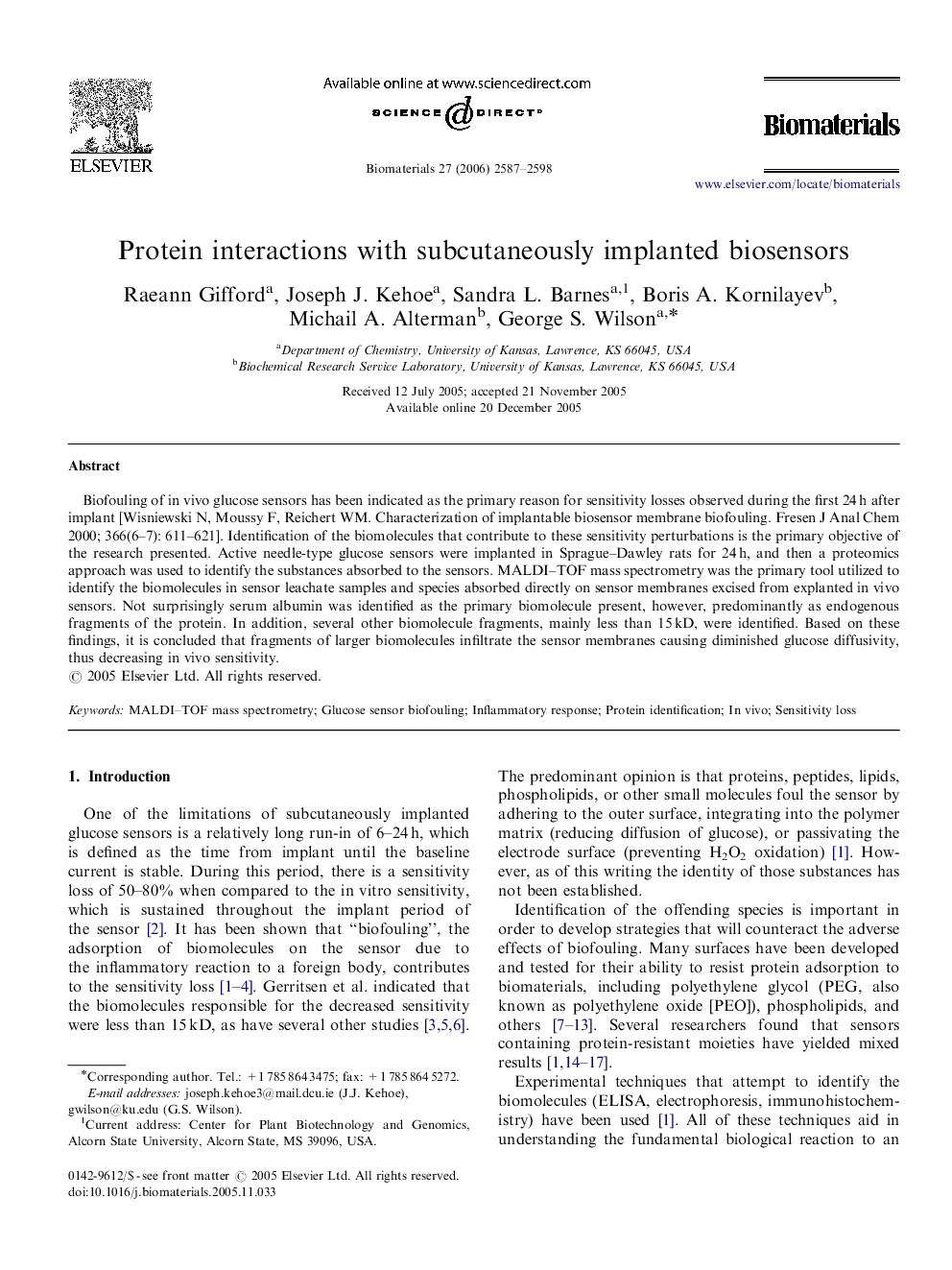| کد مقاله | کد نشریه | سال انتشار | مقاله انگلیسی | نسخه تمام متن |
|---|---|---|---|---|
| 12105 | 778 | 2006 | 12 صفحه PDF | دانلود رایگان |

Biofouling of in vivo glucose sensors has been indicated as the primary reason for sensitivity losses observed during the first 24 h after implant [Wisniewski N, Moussy F, Reichert WM. Characterization of implantable biosensor membrane biofouling. Fresen J Anal Chem 2000; 366(6–7): 611–621]. Identification of the biomolecules that contribute to these sensitivity perturbations is the primary objective of the research presented. Active needle-type glucose sensors were implanted in Sprague–Dawley rats for 24 h, and then a proteomics approach was used to identify the substances absorbed to the sensors. MALDI–TOF mass spectrometry was the primary tool utilized to identify the biomolecules in sensor leachate samples and species absorbed directly on sensor membranes excised from explanted in vivo sensors. Not surprisingly serum albumin was identified as the primary biomolecule present, however, predominantly as endogenous fragments of the protein. In addition, several other biomolecule fragments, mainly less than 15 kD, were identified. Based on these findings, it is concluded that fragments of larger biomolecules infiltrate the sensor membranes causing diminished glucose diffusivity, thus decreasing in vivo sensitivity.
Journal: Biomaterials - Volume 27, Issue 12, April 2006, Pages 2587–2598